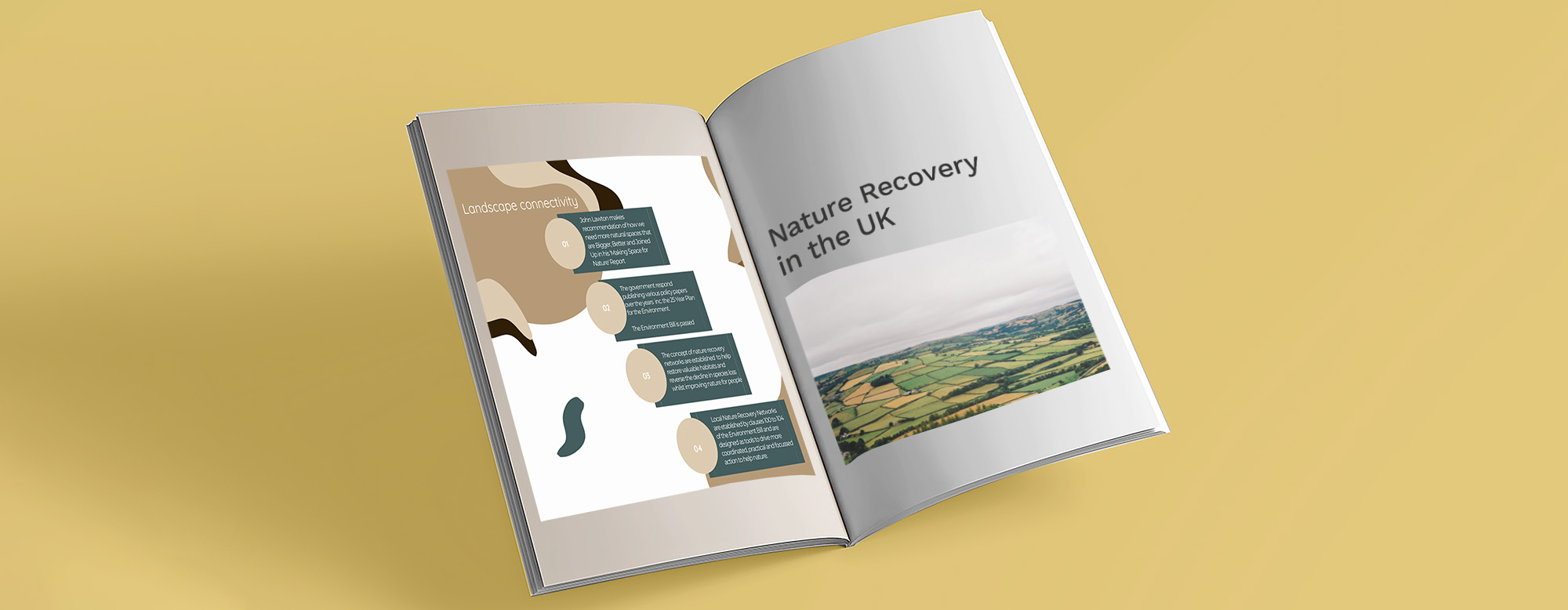Nature Recovery In The UK
It is often reported in local, national and international news that nature is in danger, populations of species are declining, habitats are disappearing and air quality is degrading. These headlines can feel catastrophic and seem to reinforce that no level of recycling, litter picking, or walking instead of driving can fix the feeling of helplessness or reverse the ecological crisis we face. But seldom do we hear within those emboldened headlines the strategies that scientists and governments are proposing to try and put things right, and you have to dig deep to uncover what is proposed to help support natures recovery. That’s why we thought we’d help fix that feeling of helplessness and summaries some of the policy behind the proposed practice for natures recovery.
The more, bigger, better and joined up approach.
Yes, it as simple as that. Professor John Lawton an ecological scientist proposed in his evidence based report in 2011 ‘Making space for nature’ that we needed a more, bigger, better and joined up approach to nature conservation. By this he meant taking a landscape scale approach to the way we see nature, to stop our natural spaces being isolated pockets of land and instead improve connectivity and interconnectedness. This approach influenced thinking and since 2011 there has been an initiative the drive this approach to make space for nature. It has influenced policy papers and shaped years of scientific research, it continues by influencing much of the governments most recent vision set out in the 25 Year Environment Plan.
The objectives of the 25 Year Environment Plan are detailed here and include government intention to achieve clean air and water, to help plants and wildlife thrive, reduce risk of environmental harm to people (droughts, flooding and coastal erosion), adapt to climate change and many more.
Nature Recovery Network
The Nature Recovery Network (NRN) is a major part of the governments plan to increase connectivity in the landscape and is a commitment made in the 25 Year Plan for the Environment. A NRN aims to help deal with some of the biggest challenges we currently face, these being: Climate Change, Biodiversity Loss and Wellbeing. To do this a number of objectives have been established and these will be achieved by creating partnerships and collective, integrative goals, mapping and collecting data- taking an evidence based approach and setting up Local Nature Recovery Strategies.
Local Nature Recovery Strategies
These strategies are a practical initiatives that aim to reverse the loss of habitat and the decline of species in England, they support the success of natures recovery and the legally binding terms set out in the Environment Bill. This will done by mapping where important habitats can be conserved, restored and connected and plan to be launched in April 2022.
This approach was taken after five pilot studies were carried out from September 2020 to May 2021 across the UK and the outcome of these are guiding and informing future policy plans.
LNRS will deliver deliver two main outputs:
X A list of priority opportunities for habitat improvement and restoration in the strategy area.
X A local habitat map which contains existing nature sites and habitats, and locations of the priorities for future habitat improvement and restoration.
Like any nature recovery strategy there are issues with how we make space nature whilst support current land uses and how such trade-offs can function in equilibrium. They’ll also be a need to fill major gaps in funding, resource and skills across national and local authorities to help make this happen.
The Environment Bill is a long awaited instrument that was initially released in 2019 and like any other bill it makes the government directly responsible for environmental law and policy setting out long-term environmental targets that will be legally binding. It propose is a transformation on our environmental governance once we leave the EU and you can read various articles and interpretations on how effective this Bill proposes to be, and make your own mind up.
You can give your views on how government implement these strategies here, be quick as the consultation closes soon on the 2nd November (don’t worry if you miss it, plenty of Non-Governmental Organisations will have put in good and practical recommendations for nature if you don’t get the time)
So this, in brief is a round about way of explaining where we’re at and hopefully the links inside this document will support your understanding. Ultimately at MOF we feel it’s important to know what’s out there and the introduction of Local Nature Recovery Networks can help bring this into the light, because once we know what’s there, we can work on understanding how important is it to save.
At a glance...



